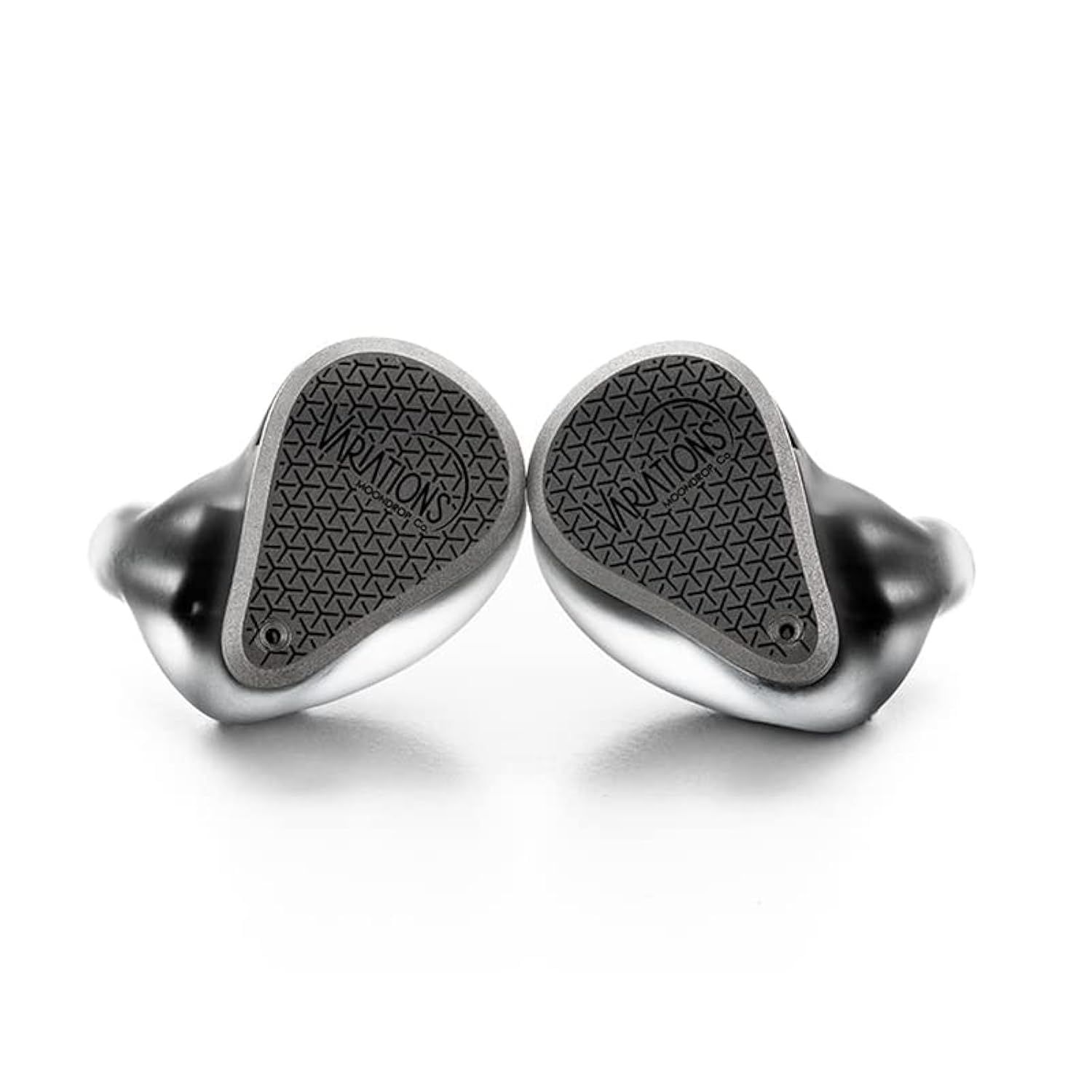Hype 4vs.Variations
Sound & Specs Comparison
Information
Both IEMs are widely regarded in the audiophile community. See how they differ in terms of sub-bass response, upper mids, clarity, and overall tonality. Spider charts and rating breakdowns included.
Objective Comparison
Facts, details, stuff.
| General Info | Hype 4 | Variations |
|---|---|---|
| Brand | Thieaudio | Moondrop |
| Country | China | China |
| IEM Description | – | Moondrop Variations is a hybrid in-ear monitor combining electrostatic, balanced armature, and dynamic drivers for a precise and immersive listening experience. Known for its balanced, reference-style tuning with tight bass, clean mids, and extended treble, it’s a favorite among audiophiles who crave clarity and technical performance. Ideal for detail lovers and those seeking a high-fidelity sound signature. |
| Price Level | 100 – 500 | 500 – 1.000 |
| Housing & Driver | ||
|---|---|---|
| Driver Config | Hybrid | Tribrid |
| Driver Types | Dynamic Driver + Balanced Armature | Dynamic Driver + Balanced Armature + Electrostatic |
| Shell Material | – | Copper |
| Cable | – | – |
| Technical | ||
|---|---|---|
| Freq Range | – | 9-40,000 Hz |
| Impedance (Ω) | – | – |
| Sensitivity (dB) | – | – |
| Crossover | – | – |
| Platform Info | ||
|---|---|---|
| Comments | 0 | 1 |
| Visit Count | 75 | 69 |
| External Reviews | 0 | 3 |
Meta Ratings
Cable-wise, Hype 4 is markedly better built, featuring sturdier connectors and less tangling — traits where Variations falls slightly short.
| Hype 4 | Variations | |
|---|---|---|
| Sound | 6.7 | 6.5 |
| Comfort Fit | 7.2 | 7.0 |
| Build Quality | 6.8 | 6.5 |
| Stock Cable | 7.1 | 5.5 |
| Accessories | 6.5 | 6.0 |
Sound Characteristics
Variations delivers b tighter sub-bass response, controlling low-end rumble with more precision than Hype 4 (6.5 vs 6). It translates bass vibrations into a a more visceral experience, while Hype 4 lacks this tactile feedback (8.5 vs 5). The lower midrange on It blends a more smoothly into the bass region, avoiding the disconnect found in Hype 4 (7.5 vs 6.3). In the upper mids, It sounds m clearer and more articulate, highlighting vocals and lead instruments better than Hype 4 (8 vs 6). Instruments like violins and brass are portrayed with a more brilliance on It, while Hype 4 sounds slightly dull (7.5 vs 6.5). It extends a further into the upper treble, adding air and openness that Hype 4 lacks (8 vs 6.3). Listeners may notice that It presents sounds with c more lateral space, giving recordings more openness than Hype 4 (7.5 vs 5). It extracts low-level details a more effectively, helping subtle nuances emerge clearer than on Hype 4 (8 vs 5). Track elements feel a more isolated and clean on It, offering clearer focus than Hype 4 (7 vs 6). It shows a better control of masking effects, maintaining clarity across frequency ranges better than Hype 4 (7 vs 6). Notes played through It feel a weightier and fuller, giving a more satisfying impact than those from Hype 4 (8 vs 7). It delivers dynamic shifts with s greater impact, making Hype 4 sound comparatively tame (8.5 vs 7). The upper range of vocals is overwhelmingly cleaner and more forgiving on It, helping it avoid sibilant harshness that Hype 4 shows (9 vs 4). It presents instrument timbre with a more natural coloration, giving a realistic tone that Hype 4 lacks (7.5 vs 5). It achieves d better tonal neutrality, avoiding colorations present in Hype 4 (7 vs 5). It portrays textures in vocals and strings with m more realism, enhancing emotional depth over Hype 4 (7.5 vs 6).
| Hype 4 | Variations | |
|---|---|---|
| Sub Bass | 6.0 | 6.5 |
| Bass | 6.5 | 6.5 |
| Bass Feel | 5.0 | 8.5 |
| Lower Mids | 6.3 | 7.5 |
| Upper Mids | 6.0 | 8.0 |
| Lower Treble | 6.5 | 7.5 |
| Upper Treble | 6.3 | 8.0 |
| Sound Stage Width | 5.0 | 7.5 |
| Detail | 5.0 | 8.0 |
| Layering | 6.0 | 7.0 |
| Masking | 6.0 | 7.0 |
| Note Weight | 7.0 | 8.0 |
| Slam | 7.0 | 8.5 |
| Sibilance | 4.0 | 9.0 |
| Timbre Color | 5.0 | 7.5 |
| Tonality | 5.0 | 7.0 |
| Texture | 6.0 | 7.5 |
Tonal Signature
// Nothing to compare yet.
